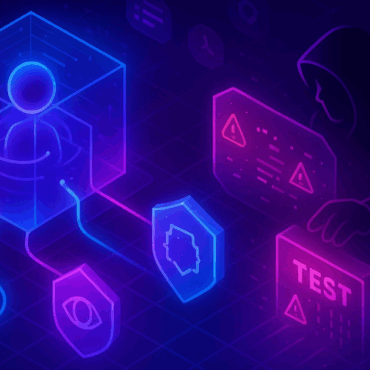Science-fiction writers are fond of using artificial intelligence (AI) as the antagonist in their stories. From the “Terminator” franchise to newer entrants in the genre like “Ex Machina,” losing control of an AI system almost always leads to the downfall of the protagonists and sometimes the rest of the human race.
Subscribe for the latest AI, LLM Security news: Jailbreaks, Attacks, CISO guides, VC Reviews and more!
The technology hasn’t developed the sentience necessary to destroy the world, despite what one Google data scientist would have the world believe. However, a lack of malicious sentience doesn’t mean this technology is ready to take place in some of the more delicate industries — and medicine could be considered the most delicate industry of all. Is AI ready for surgery?
From Robotics to Artificial Intelligence
Robotics have been taking a place in surgery for decades. The Food and Drug Administration (FDA) approved the Da Vinci System – the world’s first surgery robot – in 2000. The goal of this system was to provide minimally invasive surgery options, but these robots never operate autonomously. Instead, the Da Vinci System provides an extra pair of hands to a skilled surgeon with tools better suited for delicate surgeries.
Da Vinci might have been the first, but other surgery robots have emerged to take their place in the operating room. Medtronic, a medical-tech company specializing in medical implants, invested in a soft-tissue surgical robot named Hugo. Hugo can assist with several different procedures and performed its first surgery early in 2022.
Other big names in the medical sector, including Siemens Healthineers, Johnson & Johnson, Zimmer Biomet, and more, are working on creating their own surgical robots to compete in this increasingly crowded niche.
Surgery robots work to provide better care for patients who need surgical intervention, but they currently can’t work autonomously. Skilled hands guide each incision. That doesn’t mean there is no application for AI in the surgical field, though.
AI in Surgery
The goal of AI in medicine isn’t to replace human professionals or even to take over the operating theater. There is a lot of nuance in medicine and surgery that would be nearly impossible to program into an artificial intelligence system. Instead, it can help fill in the gaps by preventing human error.
Even the most skilled surgeon gets fatigued, and when humans get tired, they make mistakes. Small errors, like missing a flight because they read the time wrong or swapping the sugar in their coffee for salt, might seem more amusing than dangerous. A fatigued surgeon making a small error can cost someone their life.
AI could potentially prevent these small errors. The human brain might have more processing power than the average computer, but it can’t always access all the stored data. AI programs don’t get fatigued and can recall any piece of data it’s ever learned without having to think about it or sleep on it to try and aid recall.
AI software programs are already making waves in surgery. Aidoc, another medical-tech company, has developed an AI program to identify abnormalities on a patient’s CT scan. This AI system can identify pulmonary embolisms and large-vessel occlusions by comparing the new imagery with a database.
Quick identification of these conditions can improve overall patient outcomes. Oncologists and diagnosticians can apply this same technology to cancer diagnostics, making treatments more effective and improving long-term survival rates for their patients.
Surgery site infections, or SSIs, occur in 2-4% of patients after inpatient surgery. While these infections are usually treatable with antibiotics, there are some instances where they can be fatal. Another AI system, designed by Dash Analytics, can assess a patient’s risk for surgical site infections. With this data, surgeons can take extra steps to reduce the possibility that a patient might develop an SSI.
These are just two examples of the AI systems that are beginning to change the way surgeons look at the work they do in the operating room.
Risks of AI in Medicine
AI might seem like the perfect solution to remove human error from the operating theater, but as with any new technology, there are risks to consider. The most obvious risk is that AI could be wrong or make the wrong decision to the detriment of the patient.
These systems might be better than humans in terms of recall and accuracy, but human programmers still design them. One typo could mean the difference between life and death, especially in surgery. An extra 0 where it isn’t supposed to be could guide an AI-enabled surgery robot to slice an artery rather than remove a tumor.
If the surgeon works remotely or the AI system connects to the internet, there is also the risk of hacking. A hacker could do serious damage if they take over a surgical robot in the middle of a procedure. A team of electrical engineering students from the University of Washington hacked into a remotely operated surgical robot in 2015 to prove they could and to demonstrate the security flaws that could put patients at risk.
In addition to classical security vulnerabilities, such as those found in software and code, there is a new challenge facing AI programmers — adversarial attacks. The inclusion of complex deep learning models and AI algorithms opens the door for these malicious attacks. Adversarial attacks work by introducing false data into the AI model. In a self-driving car, it could convince the vehicle to drive in the wrong lane. In a surgical robot, it could teach the device to target healthy tissue or to slice an artery instead of completing the programmed task.
The medical imagery used to teach and program machine learning algorithms is more susceptible to adversarial attacks than real photographs. Subtle changes, often of no more than a few pixels, are enough to alter the results of a diagnostic model. It might not seem like an enormous risk, but delaying oncology diagnostics, for example, can have a detrimental impact on patient outcomes.
Relying on AI for surgery creates another risk outside the operating room: patient privacy. Incorporating advanced technology means there will be an increasing demand for developers to collect patient data. In a medical setting, any information bad actors could gain would be considered sensitive. In this form of adversarial attack, hackers don’t even need to gain access to the core of an AI system. All they need to do is analyze the system’s output.
On the surface, this might seem like a useful tool for improving the efficiency and efficacy of these systems. Unfortunately, data collection has darker sides, ranging from leaks and security breaches to companies selling patient information for targeted advertisements.
The people programming these AI systems are still human, and humans are always influenced – consciously or unconsciously – by their internalized biases. Medicine is already rife with these biases, with trials and studies overwhelmingly dominated by white males. Programming AI systems with these same biases could result in a lower quality of care for women, people of color, or anyone who doesn’t fit into the programmer’s narrow worldview.
In 2021, the Consumer Technology Association released trustworthiness standards for the use of AI in healthcare. The goal of these standards is to create a “baseline to determine trustworthy AI solutions in healthcare.” Before the introduction of these standards, each AI system was dependent on the whims of the programmer. Now, to adhere to these standards, healthcare AI systems must meet these basic requirements and learn about AI Red Teaming.
Is AI Ready for Surgery?
Artificial intelligence could improve patient care and outcomes, but it will never replace the skill and experience of a trained surgeon. Is AI ready for surgery? Answering now, the answer would be no. It holds a lot of potential, but the technology needs to evolve more before it’s ready to take its place in the operating room. There are plenty of places where AI can support medicine in the meantime, in diagnostics and treatment planning (as long as there is proper testing for security and robustness), but the technology isn’t ready for surgery just yet.
This article is written by Zac Amos
Zac writes about AI and cybersecurity for the online tech magazine ReHack, where he is the Features Editor. For more of his work, follow him on Twitter or LinkedIn.
LLM Red Teaming Platform
Are you sure your models are secured?
Let's try!

Subscribe for updates
Stay up to date with what is happening! Get a first look at news, noteworthy research and worst attacks on AI delivered right in your inbox.





